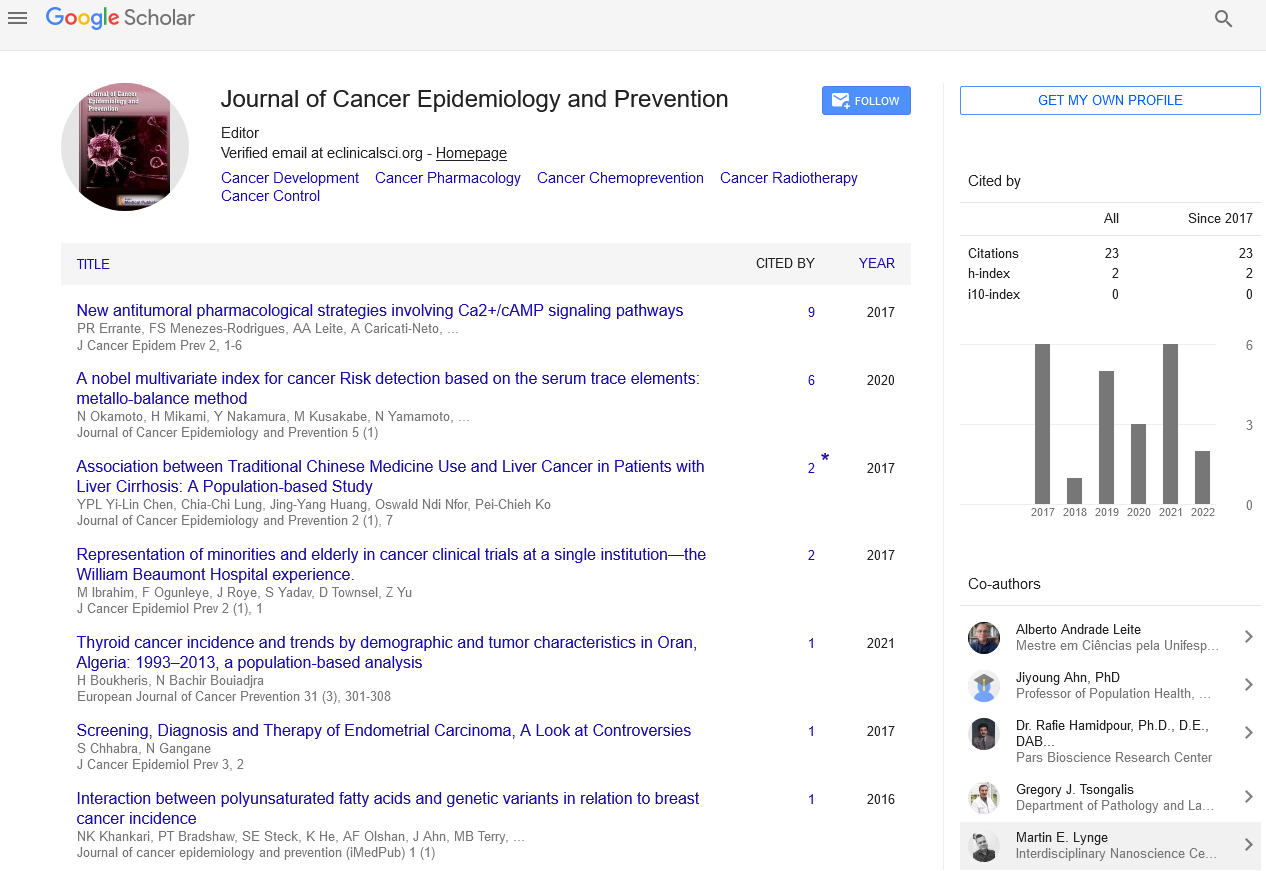Perspective - (2022) Volume 7, Issue 1
The Causes and Effects of Colorectal Cancer
Ehsan Hushmandi*
Department of Genetics, Islamic Azad University, Iran
*Correspondence:
Ehsan Hushmandi, Department of Genetics, Islamic Azad University,
Iran,
Email:
Received: 26-Jan-2022, Manuscript No. IPJCEP-22-12869;
Editor assigned: 28-Jan-2022, Pre QC No. IPJCEP-22-12869 (PQ);
Reviewed: 11-Feb-2022, QC No. IPJCEP-22-12869;
Revised: 16-Feb-2022, Manuscript No. IPJCEP-22-12869 (R);
Published:
23-Feb-2022, DOI: 10.36648/ipjcep.7.1.004
Introduction
Colon disease is malignant growth that begins in the colon,
whereas rectal malignant growth is malignant growth that begins
in the rectum. Colorectal malignant development refers to
diseases that affect both of these organs. Despite the fact that
this is not true in every case, the majority of colorectal illnesses
develop over time from adenomatous polyps. After a series of
transformations (irregularities) appear in their cell DNA, polyps
(developments) can change. A family history of colon or rectal
disease, diet, alcohol consumption, smoking, and provocative
gut diseases are some of the risk factors for colorectal malignant
development.
Description
Every cell in the body develops separates, and then passes
away in order to maintain the body healthy and functioning.
This interaction accumulates influence from time to time. In
any case, cells continue to develop and separate even after
they should have died. Colorectal malignant development can
occur when the cells that coat the colon and rectum duplicate
uncontrollably. Fortunately, most colorectal illnesses begin as
small precancerous polyps (adenomatous or serrated). These
polyps usually grow slowly and do not cause symptoms until
they become large or dangerous. This allows for early detection
and removal of potentially hazardous polyps before the
condition progresses.
Colon disease may not be highlighted as frequently as other
cancers such as breast cancer, prostate cancer, or cellular breakdown
in the lungs, yet it is one of the most common causes of
disease transmission. As a result, it’s critical to maintain control
over your colon’s health. The colon is your digestive organ, a
lengthy, topsy-turvy U-shaped tube that runs the length of your
body for waste disposal. Colon disease can start in the digestive
tract’s covering or towards the end, termed the rectum.
We should make every effort to contract Colon illness. If you’re
over 60, you’re almost certain to get the disease, especially if
you have a family history of colon cancer, chronic entrails disease,
diabetes, or obesity. Smoking cigarettes and consuming alcoholic beverages have also been linked to an increased risk
of colon cancer. Although the data isn’t conclusive, eating red
meat or processed meats may increase the risk of colon cancer.
Lean, natural red meat may be associated with lower risk. They
may recall pain in your mid-section, blood in your stool, weight
loss, or looseness of the bowels if you have adverse effects.
Ideally, you’ll be tested before you have any negative effects,
during a routine screening procedure such as a colonoscopy.
These tests use advanced devices to look within your colon
and rectum for any polyps, which are hazardous or pre-malignant
growths. If your primary care physician determines that
you do have colon malignant growth, you’ll need to undergo a
few more tests, including sweeps of your mid-region to check if
the disease has spread and, if so, where it’s discovered in your
body. In any case, how is colon cancer treated? That depends
on how aggressive your malignant growth is and how far it’s
progressed, but colon disease is usually treated with surgery or
killed with chemotherapy or radiation. You may receive one or
a combination of these medications.
Conclusion
One of the most treatable malignant growths is colon illness.
You have a chance of being restored, especially if you obtain
it early. It is ultimately up to you to detect colon cancer while
it is still treatable. If you’re above 45, you should definitely get
checked. Furthermore, regular physical labour and consuming
at least a few products of the soil every day, perhaps with natural
wheat grain, can help to prevent it. If you want to avoid
colon disease, you should avoid processed and roasted red
meats, as well as smoking, excess calories, and alcohol.
Acknowledgement
None.
Conflict of Interest
The author declares there is no conflict of interest in publishing
this article.
Citation: Hushmandi E (2022) The Causes and Effects of Colorectal Cancer. J Cancer Epidemiol Prev. 7:004
Copyright: © Hushmandi E. This is an open-access article distributed under the terms of the Creative Commons Attribution License, which permits unrestricted use, distribution, and reproduction in any medium, provided the original author and source are credited.

